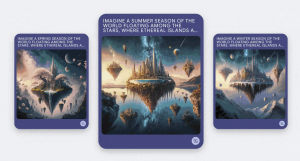In the overly crowded business world, it’s important to distinguish your small business, but as you might imagine, this is easier said than done. Having a robust online presence that is consistent with your print marketing and brand standards is a sound way to carve out your space in the digital world.
While a business’s online presence includes everything from its website to social media to online reviews and SEO ranking, today we’re going to focus on boosting your online presence by enhancing your website design.
Beyond being a marketing channel for your small business, your website offers visitors the opportunity to experience your brand online. Naturally, sight and sound are two literal ways to incorporate the senses into your website’s design. However, through these two senses, you can cultivate the remaining three senses: touch, smell, and taste. The key to successfully evoking the desired emotions and sentiments through your website is through language and imagery.
Sight and Sound
As mentioned before, sight and sound are two natural components of modern website design. However obvious they may seem, there are best practices for making the intended impression on your visitors. Regarding sight, properly sized, high-quality images send clear messages to your visitors, while skewed and pixelated photos connote a lack of credibility. The design and format of your web pages are important components, too, as they orchestrate the page’s flow and clarity of message to its visitors.
Website design best practices have evolved, and a newer and widely accepted trend is block segmentation. Breaking a web page into discrete sections (the blocks) compartmentalizes the page’s content. These breaks give viewers a natural pause before consuming more information.
Sound is something that can be easily conveyed on a website, but it must be used with discretion. We’ve moved past the days of background music automatically playing as soon as a website loads. Instead, use sound sparingly to make the greatest impact.
If you have a great how-to video or a festive holiday video to share with your visitors, upload it to your site in a logical place, and select a setting that requires users to push play in order for the volume to work.
People visit websites to gain information and come to decisions about moving forward with a business. Having random sounds or uncontrolled music playing while on your site can be a major distraction. Thoughtfully integrate sound into your website design as it relates to your brand standards and current on-site call to action.
Smell, Touch, and Taste
We’ve discussed how sight and sound are the two senses easily invoked through website design. Now it’s time to dig into how the remaining three senses can become part of your website experience. Language, word choice, and imagery play enormous roles in stimulating these sensory responses to a website.
Descriptive language that triggers memories and touches on common associations are what make the five senses come alive on a website. How can a picture of freshly baked cookies on a cooling rack beside a glass of milk evoke your sense of taste and smell?

image courtesy of Shutterstock
Interestingly, just seeing an image has the ability to stimulate all five senses.
“When we see an image, we begin a neurological process that organizes sensation from our eyes and transfers it to the other four senses; sound, touch, smell, taste. This is the explanation behind why our mouth begins to salivate when we see a juicy lemon or a packet of salt and vinegar crisps.”
Through this visceral reaction, common associations are recognized by the viewer and start drawing on the other senses. Coupled with an illustrative caption or product description, you can start to evoke the senses further. Adding a statement such as, “delivered fresh out of the oven, just like grandma used to make,” pulls at the reader’s smell and taste senses.
Reminding the visitor of fond memories, such as cookies hot from the oven and made with love by a relative, creates a warm feeling and triggers those familiar senses. It can even bring out sounds if they have specific memories of their grandmother calling out that cookies are ready. Amazingly, all of these emotions and senses came from an image and twelve words.
For your website, it’s important to distinguish which senses and emotions you want the visitor to experience and tailor your content to those specific goals. By thinking of your website as a destination for your customers, you can better align their reactions and impressions with your business priorities.
Including emotions and senses into your website design adds to the strength of your online presence. A dynamic website is a key factor in establishing brand awareness and credibility. Try incorporating more of the senses into your website for an enhanced online presence.
Digital & Social Articles on Business 2 Community(115)
Report Post




